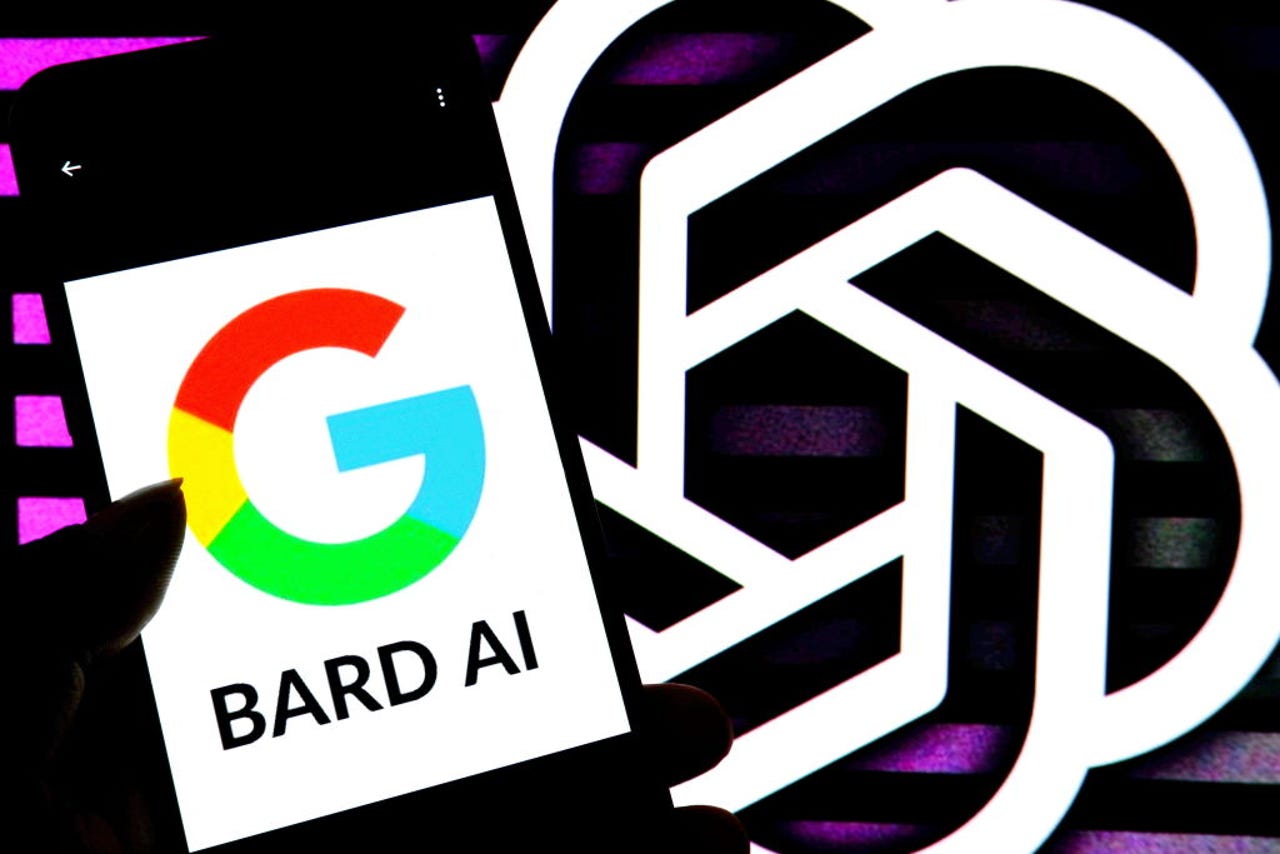
Google is expanding the reach of its Bard AI tool to integrate directly with many of the company’s core apps and services. Announced on Tuesday, a new feature known as Bard extensions can link up with Gmail, Docs, Google Drive, Google Maps, YouTube, and even Google Flights and Hotels. The idea is to use Bard as a one-stop shop to grab information across these different services.
By using Bard extensions, you can ask questions and submit requests that tie into any or all of Google’s various apps.
Also: How to use Google Bard now
As one example, maybe you’re planning a trip to Tokyo with other family members and want some help from Bard. You could ask the tool to scan for dates that work for everyone based on their Gmail messages, search for flight and hotel information, find Google Maps directions to the airport, and check out YouTube videos about Tokyo. And you can do all of that in one single conversation with Bard.
As another example, maybe you’re looking for a new job and need Bard’s assistance to find a specific resume saved in Google Drive. You could ask for the resume by name or date and ask Bard to summarize it to help you create a cover letter for the position.
Bard extensions are opt-in, so you can turn them on or off for each application. Any personal information grabbed from Gmail, Docs, or Drive is unseen by human reviewers, won’t be used to generate ads, and won’t be used to train Bard, promises Google.
Also: Google’s Bard AI says urgent action should be taken to limit (*checks notes*) Google’s power
To try Bard extensions, fire up Chrome and head to the extensions page. Here, you can enable or disable the extensions for Google Flights, Google Hotels, Google Maps, Google Workspace (Gmail, Docs, Drive), and YouTube. Enabling Google Workspace will prompt you to connect to your Google Workspace account. This page lists a few examples for each app so you can go for a test drive before submitting your own queries.
Next, head to Bard and enter your question or request at the prompt. If your request contains a word such as “hotels,” “flights,” or “directions,” Bard will automatically tap into the correct extension to form its response. Otherwise, you can reference the service you wish to use with the “@” symbol. Start typing “@” followed by the service in question, such as “@hotels,” “@flights,” or “@maps,” and Bard will choose the correct one. Bard will then use the appropriate service to generate and display its response.
And there’s more in store for Bard users. One of the problems with today’s AI chatbots is that they’re prone to misinformation, or hallucinations, as the developers call it.
Also: The best AI chatbots
To try to guard against these snafus, Bard now offers a way to double-check any responses in English. After the response appears, click the Google icon.
Bard then evaluates its own response and scans the web for sources to verify the information. Each sentence or phrase in the response is then highlighted. Clicking on a highlighted section displays the source of the information.
As one more new feature in Bard, Google now lets you build on shared conversations. Share a Bard chat with someone else through a link. That person can then continue the conversation to ask Bard more questions related to the subject. In this respect, you can both use Bard collaboratively to explore the same topic.
“All of these new features are possible because of updates we’ve made to our PaLM 2 model, our most capable yet,” Google said in a blog post about the Bard updates. “Based on your feedback, we’ve applied state-of-the-art reinforcement learning techniques to train the model to be more intuitive and imaginative. So, whether you want to collaborate on something creative, start in one language and continue in one of 40+ others, or ask for in-depth coding assistance, Bard can now respond with even greater quality and accuracy.”
Artificial Intelligence



